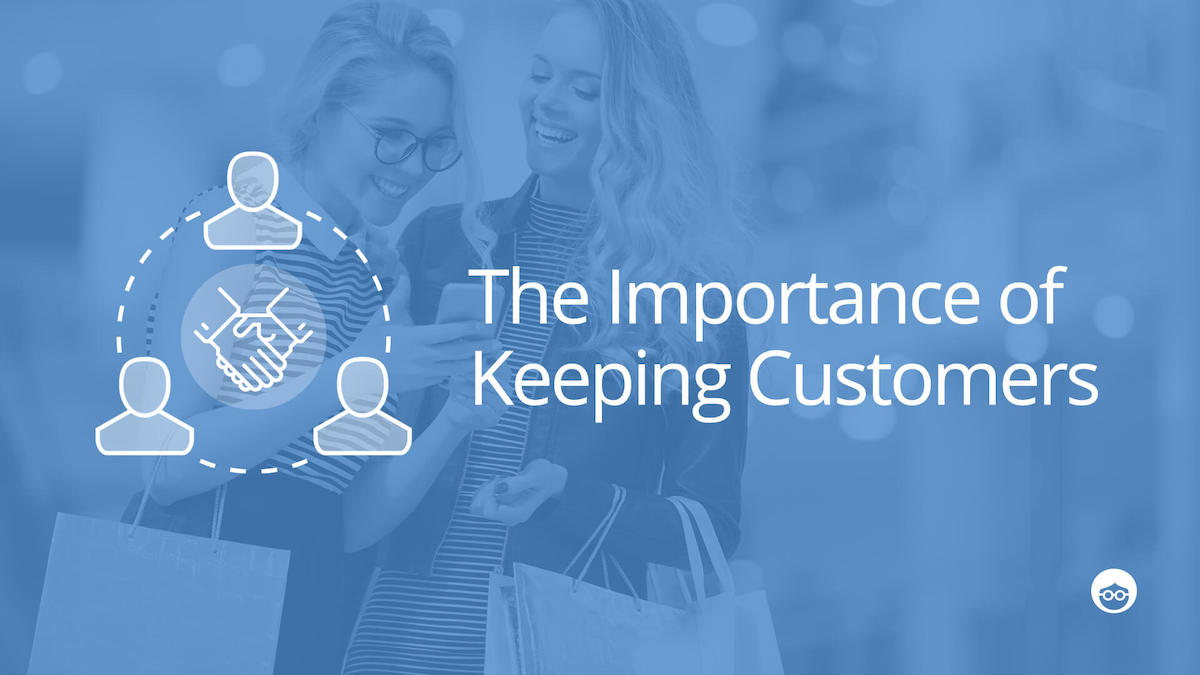Why Keeping Customers Is Just As Important As Getting New Ones

When a customer wants to buy a car, she might begin her search in Google with the search phrase: “best cars for safety.”
Let’s say she’s a mom of one, and just moved out of the city. She is looking for a safe, quality car that has all the latest features.
When she looks at the search results, she sees Google’s recommendations at the top of the page. She also checks out the lists of safe cars provided by different publishers who appear on the first page of the search results.
She’s got many choices. And this is just the beginning.
She is not yet dedicated to any one particular brand, because this is her first car purchase. Which dealership will she choose to buy from? And will she continue to buy or lease from the same car dealership over time?
A lot of that depends on how focused the brand is on keeping its customers.
The importance of keeping customers
Today’s customers have immediate access to endless products and services – and the ability to compare these products and services via in-depth online research.
After customers engage with your brand and make the decision to purchase goods or services from you, the ability to keep these customers requires an emotional connection, between your brand and the customer.
Creating that emotional connection is not easy.
Why keep customers? According to Forrester, it costs 5 times more to acquire a customer than to retain one. In addition, retaining customers reflects the brand’s dedication to the experience it provides for its customers.
Brands understand that selling products and offering services is no longer just a transaction; it’s a relationship that has to be cultivated. Here are some ways to build customer relationships:
#1 Customer Lifetime Value
Any kind of relationship has to start somewhere.
And if the relationship is going to be long term, it has to look to the future. One key metric that can help you measure the ROI of your marketing campaigns is Customer Lifetime Value (CLV).
CLV is the predicted revenue generated by a customer in their lifetime relationship with a brand. Simply put, the CLV measures how much value you’ll be getting from a customer over the years.
Measuring the lifetime value will vary across businesses (HubSpot details one way to do it)
The data is meant to inform you how your brand should approach customer acquisition and loyalty. Ask how you can improve customer lifetime value: should you offer a loyalty program? Maybe pay more attention to customer feedback? These are examples of questions your team should be asking and answering.
The answers will help you make business decisions that benefit your brand’s relationship with its customers.
#2 Take a cue from your customers
It’s a “get-inside-the-customer’s-head” strategy that forges a clear path to creating value for customers.
Companies can begin to understand their customers’ needs and wants by analyzing customer data.
Where can customer data be found?
Customer data can be found across social media, in online reviews, and direct customer feedback like surveys and phone calls. Feedback can be found in how users interact with your website.
One of the best ways to understand your customers, though, is to talk to them. Brent Trotter, content specialist at Clique Studios, gives five steps to help understand your customers:
- Interview and observe multiple people
- Analyze the data you gather
- Uncover patterns in their behavior
- Group participants into behavior models or “archetypes”
- Create a summary of these insights. You should use a customer persona to summarize your customers. Personas are a one-page, easy-to-read document that attempts to summarize the demographics, psychographics, pain points, incentives, hopes, and dreams of your customers.
In addition to customer interviews, you can use tools such as Google Analytics to add details into your personas. You can segment users based on lifestyle interests, what they are in the market for, or more specific categories.
#3 Make your website accessible for everyone
According to the Centers for Disease Control and Prevention, 1 out of 5 Americans has a disability. That’s a lot of people – a lot of consumers who can potentially interact with your business online.
Accessibility is also something you should think about: by designing your website for people with disabilities, you can create opportunities for everyone to have a smoother user experience when they’re navigating your website.
An example of making things better for everyone is the curb cut on a sidewalk. A curb cut is a flattened edge next to the curb as part of a crosswalk. A curb cut is designed for people with wheelchairs, but they are helpful for everyone. Can you imagine a crosswalk without a curb cut?
You should care about web accessibility because it will help foster customer loyalty. If a user with a disability has a positive experience with your website, he or she will want to come back. Accessibility will also make things easier for all your customers – just like a curb cut.
#4 Centralize through distributed marketing
Another approach to fostering customer loyalty is by centralizing your marketing communications, campaigns, or assets so that they ensure brand consistency when delivered to customers.
This approach is called distributed marketing, a model adopted by organizations that have both a central (corporate) marketing function as well as local (distributed) marketing functions.
Marketing resource management company Aprimo explains distributed marketing by using an example of a globally-known hotel.
Let’s say there’s a concert scheduled throughout the year in various cities where your hotels are located. Your goal is to get people who are going to the concert to stay at your hotel, so you create a campaign. With distributed marketing, you can easily provide all of your hotels with emails, banner ads, and mailers that are part of that one campaign.
Everything can be managed at the corporate office.
By having all your marketing communications centralized, you can improve efficiency, ensure brand compliance, and empower both corporate and local marketing functions with better, more aggregated customer data and insights.
Consistency is important to customers -, especially for a well-known, global hotel. You want customers to immediately recognize you when they interact with your brand online. Customers also want to know they will get the same positive experience across all of your hotels.
#5 Offer reliable customer service
Brands need to listen and respond to feedback.
A negative comment on Twitter can push away new customers. But a genuine online review on Google about empathetic customer service can build trust in your brand.
The way customers find businesses today starts with an online search. And when consumers are searching for a business online, they are going to see reviews of your business from other consumers. This will significantly impact their decisions.
Customer feedback posted publicly in online reviews and social media is even a tool you can use to improve customer service. Consumers are more knowledgeable than ever, and proactive support teams should take feedback seriously and always be focused on continuous improvement of products and services. Remember, behind every great customer service system is a highly-trained staff and dependable online platforms.
Customer expectations are always changing. It’s up to brands to keep up by taking customer feedback seriously and being consistent in their genuine attempts to satisfy their customers.
Brands also need to build deep relationships with customers, and this can only be done by understanding who their customers really are. This way, you’ll not just get new customers; you’ll keep them too.











